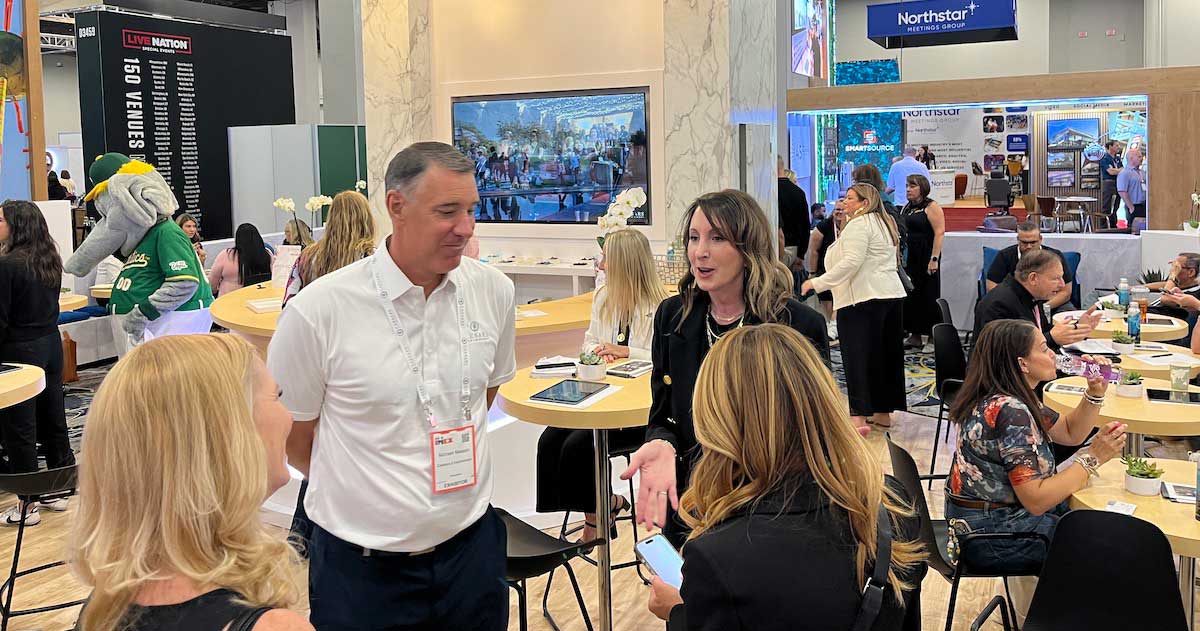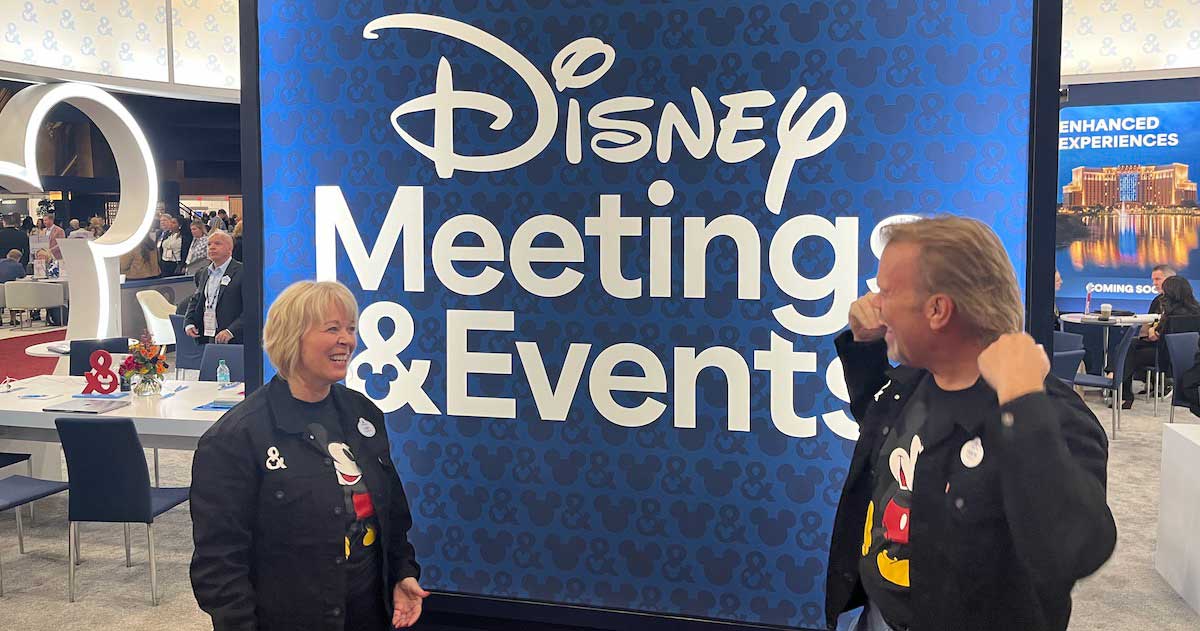This story is part of a special section from The Meeting Professional, brough to you by 
With the value of incentive travel becoming more evident to many companies as a tool for increasing sales and profitability, strengthening relationships with employees, sparking engagement and improving productivity, inclusion in these programs is on the rise, according to findings from the new Incentive Travel Industry Index. Sixty-five percent of respondents say eligibility is increasing, the survey found.
In the past, such findings might have been released by the Society for Incentive Travel Excellence (SITE) in its SITE Index, an annual global survey. The new Incentive Travel Industry Index was conducted in a groundbreaking partnership with the Incentive Research Foundation (IRF) and Financial & Insurance Conference Professionals (FICP).
“This is, for the first time, a collaborative effort,” says SITE CEO Didier Scaillet. “SITE has been doing the SITE Index for a number of years. The IRF has been doing its own surveys for years as well. FICP was regularly polling its members about the climate within the financial services and insurance industry. We were, at about the same time, asking the same questions to the same audience. What really happened is for the first time, we said, ‘No. Let’s do this together.’”
The collaboration happened quickly and sprang from conversations Scaillet had with Melissa Van Dyke, IRF president, and Steve Bova, FICP executive director.
“We had the initial conversations when I became CEO of SITE in February,” Scaillet says. “In three months, we were all able to agree on how to move this forward.”
The group agreed to stick with J.D. Power, the research firm SITE had been using.
“They obviously bring huge credibility to the exercise,” Scaillet says. “They are one of the top research companies in the U.S.”
As part of the collaboration, the groups consolidated their questionnaires. They also decided to move up the release date to September, instead of late fall when SITE’s previous survey traditionally was released, so that companies could use it to develop their sales and marketing plans. An early reveal of the findings took place in early September at the SITE Classic, SITE Foundation’s premier fundraising event.
Expanding the Scope
One positive result of the collaboration has been a significantly larger sample size.
“For the SITE Index in 2017, we had about 600 respondents,” Scaillet says. “This year we have 1,016 respondents to the survey from 80 countries. Over 15 percent of the respondents are from Asia, where incentive travel is on a surging incline, particularly in China. The large response is really allowing us to see the emerging global landscape and to slice and dice the data by region. We also had record participation in terms of corporate end users. It’s a big step forward for the incentive travel industry to have all of the major organizations come together on one major piece of research.”
Among the global pool of respondents, about 40 percent were buyers of incentive services, Bova says.
“These were made up of third-party/agency buyers and corporate end-user buyers,” he says. “For 2018 we increased the number of corporate end-user respondents by a staggering 80 percent. Of these, 40 percent were from the financial and insurance industry, traditionally a big user of incentive travel.”
The aim of the survey is to provide regular decision-making insights and trends for corporate meeting and incentive planners, third parties and suppliers of the incentive travel industry, according to the collaborators.
“We’re excited the organizations are able to combine their resources,” Bova says. “This eliminates some redundancies within the industry and therefore is in the best interest of everyone involved. We all work together through the Events Industry Council. This is good news to the industry about three organizations that are combining efforts and doing something for the benefit of everyone.”
A Positive Outlook
One thing that stood out about the inaugural survey findings is a story of growth, Van Dyke says.
“More than half of buyers are increasing their budgets,” she notes. “Almost two-thirds will be expanding the number of eligible individuals who earn the programs.”
There are many reasons for the growth, from healthy economies to internal factors at individual companies such as a push to create a family friendly vibe and to add wellness-related activities.
“They tell us this growth is coming from company growth as well, which is fantastic to hear,” Van Dyke says. “That is allowing planners to expand their design, with over three quarters including spouses on their trips or adding wellness or adding mobile apps, social media campaigns and CSR—all good things. It was really an ‘and’ story, instead of an ‘or’ story.”
Each of these trends has broader implications, she notes. For instance, the inclusion of attendees’ spouses may change the tenor of a meeting and the activities planned for it.
“When you have your spouses there, you have a little more freedom to do fun things,” Van Dyke says. “It’s not all concentrated on the meetings.”
But the growth in incentive programs isn’t happening unchecked, according to the collaborators. For one thing, even for companies that are believers in incentive travel, budgets to fund it are not unlimited. Many companies want to know that the money they spend on incentive travel will have a bottom-line impact or noticeable influence on the company culture.
“People are cautious in how they spend their money,” Scaillet says.
And there are countervailing trends that may slow the growth story, Van Dyke notes. For instance, costs to operate an incentive travel program are going up.
“While growth is currently in progress for most companies and most programs, the reality is there are counter-currents such as rising costs and internal perceptions that temper that growth,” she says. “Over two-thirds of planners are taking steps to contain costs with things like offering less expensive amenities or less expensive destinations in the consideration set.”
Fortunately, the nature of incentive travel programs allows companies to adjust them to reflect concerns about costs, Van Dyke notes.
“Incentive travel programs are often times self liquidating,” she says. “The number of individuals we send is often directly related to the lift we have in sales. The results in incentive travel are very tightly woven into what is happening in business and the economy versus cost centers that many types of meetings might fall into.”
Nonetheless, workplace trends seem to be favoring the incentive travel industry for the moment. The findings of the survey come at a time when non-cash rewards are on the rise at organizations, as evidenced by data from the IRF, Scaillet says.
“Companies are realizing you can certainly give an increase and better pay, but at the end of the day offering people a unique travel experience is something that is hugely powerful,” he says.
Contributing to the rapid growth of incentive travel is the war for talent in many industries during a period of high employment in markets such as the U.S. Many companies are realizing how much their teams contribute to the organization’s overall value and looking for new ways to deepen their relationships with their employees, explains Scaillet.
“People have become the absolute primary asset of companies,” he says.
For some companies, incentive programs are powerful tools for retention, Scaillet notes. He points to one service-industry company with 400 to 500 employees that was able to reduce staff turnover from about 10 percent to 4 percent by offering a travel experience to employees that proved to be a powerful motivator. Such successes can reduce the cost of hiring new talent.
“They reckon they were able to save about $10 million doing that,” he says.
Some firms find incentive travel bridges gaps in compensation systems designed many years ago and reinforces their culture, Van Dyke says.
“Modern compensation systems were not set up to deal with a lot of things we ask employees to do today that are not part of their core job—things like maintaining your wellness, performing in line with your core values and maintaining a level of training that the company may not consistently pay for,” she says.
Many companies are framing their communication around their incentive travel programs accordingly.
“Instead of saying, ‘You’re a top performer because you sold the most,’ they’re saying ‘You mentored a number of people,’” Van Dyke says. “They can include these other types of performance, other than just sales.”
A well-thought-out incentive program can ultimately contribute to a firm’s employer brand, helping it to become a place that people want to work, according to Van Dyke.
“The story becomes, ‘I want to work for a company that does something cool like that,’” she says. “Especially for the Millennial generation, you don’t have an Instagram-able life if you are sitting in a cube.”
But with the researcher still analyzing the data upon the preliminary release, there remain some areas for further exploration and likely some new areas of discovery, Bova notes.
“There are three segments or audiences we are looking at,” he says. “What does the data say? What is the survey saying in its entirety? What does it say for the incentive houses? What does it say about corporate buyers? What does it say about providers of incentive services? What is their perspective? By doing that you are going to hit the real broad brush.”
And with three groups collaborating on the survey the brushstrokes are likely to become a lot broader in the future.







